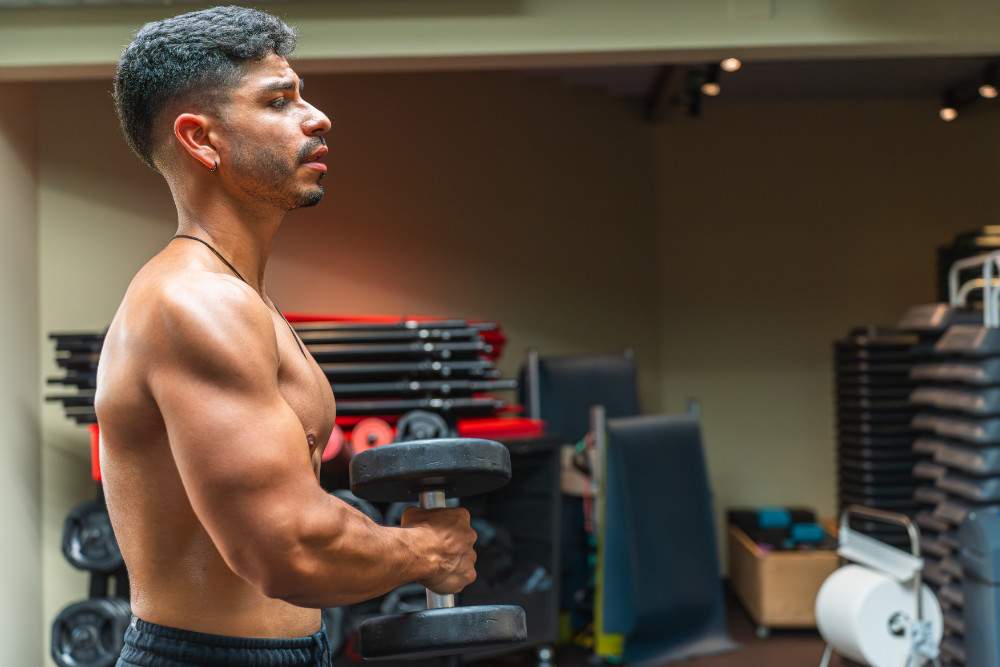Should You Lift Heavy or Light for Bigger Biceps? Here’s What Actually Works
Walk into any gym and you’ll see two camps. One group is grinding out heavy curls with 6-8 reps. The other is pumping out 15-20 reps with lighter weight. Both think they’ve got it figured out.
So what’s the real deal?
Heavy vs Light – What the Research Shows
Here’s the thing – both heavy and light weights can build your biceps. A 2017 study looked at rep ranges from 6 all the way up to 30 reps. The results? As long as you’re pushing close to failure, muscle growth was pretty similar across the board.
Your biceps don’t really care if you’re curling 80% of your max for 6 reps or 60% for 12 reps. What matters is that you’re working hard.
The sweet spot though? 8-12 reps hits different because:
- You get enough volume to grow
- Way less chance of getting hurt compared to maxing out
- Still heavy enough to actually challenge your muscles
- You can focus on doing it right instead of just surviving the weight
Want to Get Stronger? Go Heavy
If you want to curl heavier weights, you need to practice curling heavy weights. Simple as that.
Research from Australia shows that lifting 85% or more of your max gives you the biggest strength gains. But here’s the catch – just because you can curl heavy doesn’t mean your biceps will look bigger. Strength and size aren’t the same thing.
Can Light Weight Build Muscle?
Yeah, but there’s a catch. You have to go to complete failure every single set.
McMaster University found that lifting just 30% of your max can build as much muscle as 80% – but only if you’re grinding out every last rep until you literally can’t do another one.
The problem? This approach sucks because:
- Every set has to be torture
- Takes forever in the gym
- You’ll be way more tired
- Your strength won’t improve much
Most people with jobs and lives don’t have time for this.
The Best Rep Range for Growth
8-12 reps using 65-75% of your max weight. This is where the magic happens.
Why this works so well:
- Heavy enough to actually stimulate growth
- You won’t be completely destroyed after each set
- Much safer than going super heavy
- Doesn’t take all day like high-rep training
- Easy to add weight or reps as you get stronger
Every trainer worth their salt recommends this range for people who just want bigger arms.
You Have to Push Hard
Doesn’t matter what weight you use – you need to get within 2-3 reps of failure. Just going through the motions won’t cut it.
Research shows that stopping 4+ reps short of failure kills your results. Your biceps need to feel challenged to grow.
So if you can curl 20kg for 12 reps max, stop around rep 9-10. Push yourself but keep the form clean.
New to This? Start Light
Beginners should start with 12-15 reps to learn how to do it right. Jumping straight to heavy weight is asking for trouble.
Focus on:
- Perfect form – slow and controlled
- Full range of motion – stretch and squeeze
- Adding weight gradually over weeks
- Building up your joints and tendons
After 2-3 months of consistent training, then you can move to the 8-12 range.
You Don’t Need Expensive Stuff
Basic gym membership runs about $15-25 per week. That’s all you need.
Want to train at home?
- Adjustable dumbbells: $200-400
- Resistance bands: $30-50
- Pull-up bar: $50-100
One-time purchase, years of gains.
Quick Answers
- How often? 2-3 times per week with rest days between.
- How many sets? 10-16 sets total per week.
- Barbells or dumbbells? Both work. Barbells let you go heavier, dumbbells give better range of motion.
- When will I see results? 6-8 weeks if you’re consistent.
- Need supplements? Nope. Just eat enough protein – about 1.6-2.2g per kg of body weight.
Bottom Line
Both heavy and light can work, but 8-12 reps with moderate weight gives you the best bang for your buck. It’s effective, safe, and doesn’t eat up your whole day.
Stop overthinking it and start lifting.

